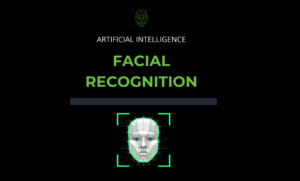Facial Recognition is Exploding in Popularity – This New Technology is Breaking Through
Facial Recognition — The Future of Security Around the World
In an age where security and convenience are paramount, facial recognition technology has emerged as a groundbreaking solution, reshaping how we approach safety and authentication across various sectors. From enhancing security in public spaces to streamlining user experiences in personal devices, facial recognition is at the forefront of technological innovation.

Understanding Facial Recognition Technology
Facial recognition is a biometric technology that identifies or verifies a person’s identity using their facial features. It operates by capturing an image of a person’s face and comparing it to a database of known faces. This process involves complex algorithms that analyze unique facial landmarks, such as the distance between the eyes, the shape of the jawline, and the contours of the face.
Applications of Facial Recognition
Security and Surveillance: One of the most prominent applications of facial recognition is in security and surveillance systems. Law enforcement agencies use this technology to identify suspects and enhance public safety. For example, many cities have implemented facial recognition cameras in high-traffic areas to monitor and prevent criminal activities.
Access Control: Businesses and organizations are increasingly adopting facial recognition for access control. Employees can simply walk up to a secure entry point, and the system automatically recognizes them, allowing for seamless and secure access without the need for physical ID cards.
Smart Devices: Many smartphones and tablets now feature facial recognition as a means of unlocking devices and authorizing transactions. This technology enhances user experience by providing quick and secure access while ensuring personal data remains protected.
Retail and Marketing: Retailers are utilizing facial recognition to analyze customer behavior and preferences. By identifying returning customers, businesses can tailor marketing strategies and improve customer service, ultimately leading to increased sales and customer loyalty.
Benefits of Facial Recognition
Enhanced Security: Facial recognition systems provide a high level of accuracy and efficiency in identifying individuals, reducing the likelihood of unauthorized access or fraud.
Convenience: Users enjoy a faster and more convenient experience, whether unlocking their devices or accessing secure locations, without needing to remember passwords or carry access cards.
Data Insights: For businesses, facial recognition can deliver valuable insights into customer demographics and behaviors, helping to refine marketing strategies and improve overall service.
Addressing Privacy Concerns
While the advantages of facial recognition are substantial, it’s essential to address privacy concerns. The collection and storage of biometric data raise questions about consent and data protection. Responsible implementation and transparent policies are crucial to ensuring users’ privacy and building trust in this technology.
The Future of Facial Recognition
As facial recognition technology continues to evolve, we can expect even more advanced applications and integrations. Innovations in artificial intelligence and machine learning will enhance the accuracy and reliability of these systems. Additionally, as regulatory frameworks develop, businesses will need to navigate compliance to protect consumer rights while leveraging the benefits of facial recognition.
Conclusion
Facial recognition technology represents a significant advancement in security and convenience across various sectors. Its ability to provide fast, accurate identification makes it an invaluable tool in today’s world. As this technology continues to grow, balancing its benefits with ethical considerations will be crucial in fostering trust and ensuring a secure future.
A facial recognition system[1] is a technology potentially capable of matching a human face from a digital image or a video frame against a database of faces. Such a system is typically employed to authenticate users through ID verification services, and works by pinpointing and measuring facial features from a given image.[2]
Development began on similar systems in the 1960s, beginning as a form of computer application. Since their inception, facial recognition systems have seen wider uses in recent times on smartphones and in other forms of technology, such as robotics. Because computerized facial recognition involves the measurement of a human’s physiological characteristics, facial recognition systems are categorized as biometrics. Although the accuracy of facial recognition systems as a biometric technology is lower than iris recognition, fingerprint image acquisition, palm recognition or voice recognition, it is widely adopted due to its contactless process.[3] Facial recognition systems have been deployed in advanced human–computer interaction, video surveillance, law enforcement, passenger screening, decisions on employment and housing and automatic indexing of images.[4][5]
